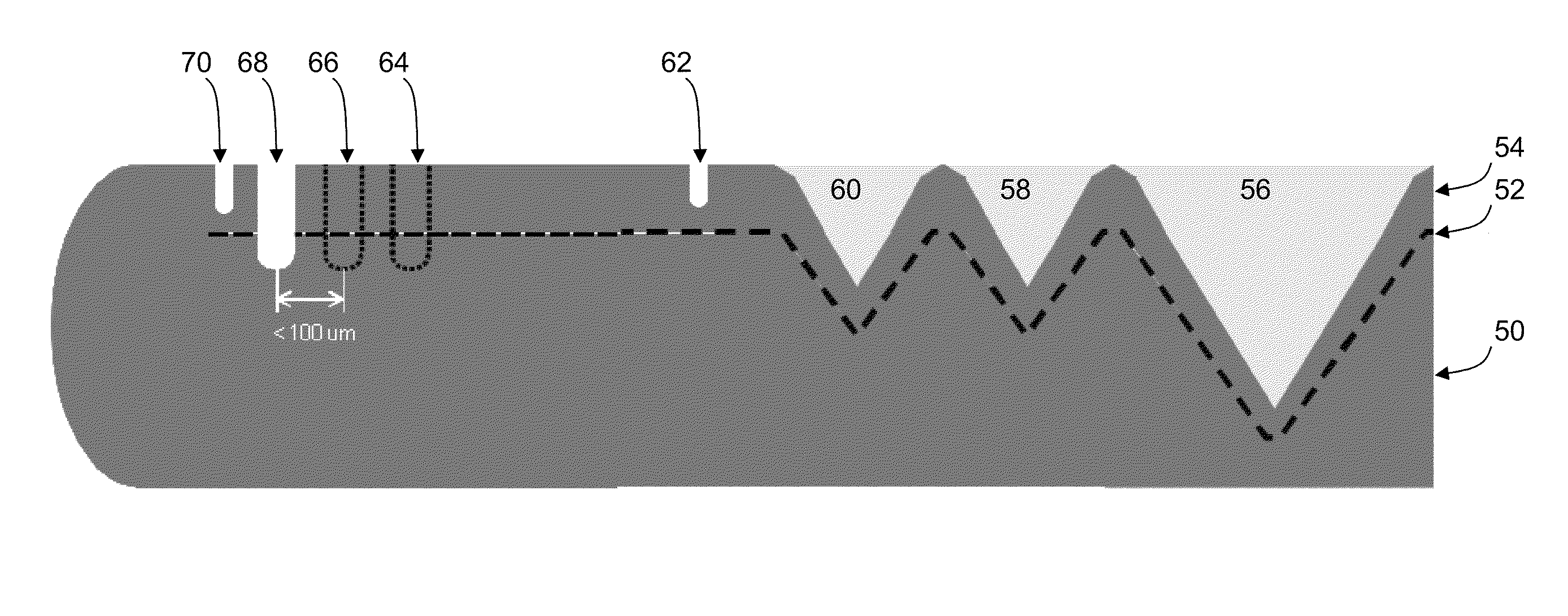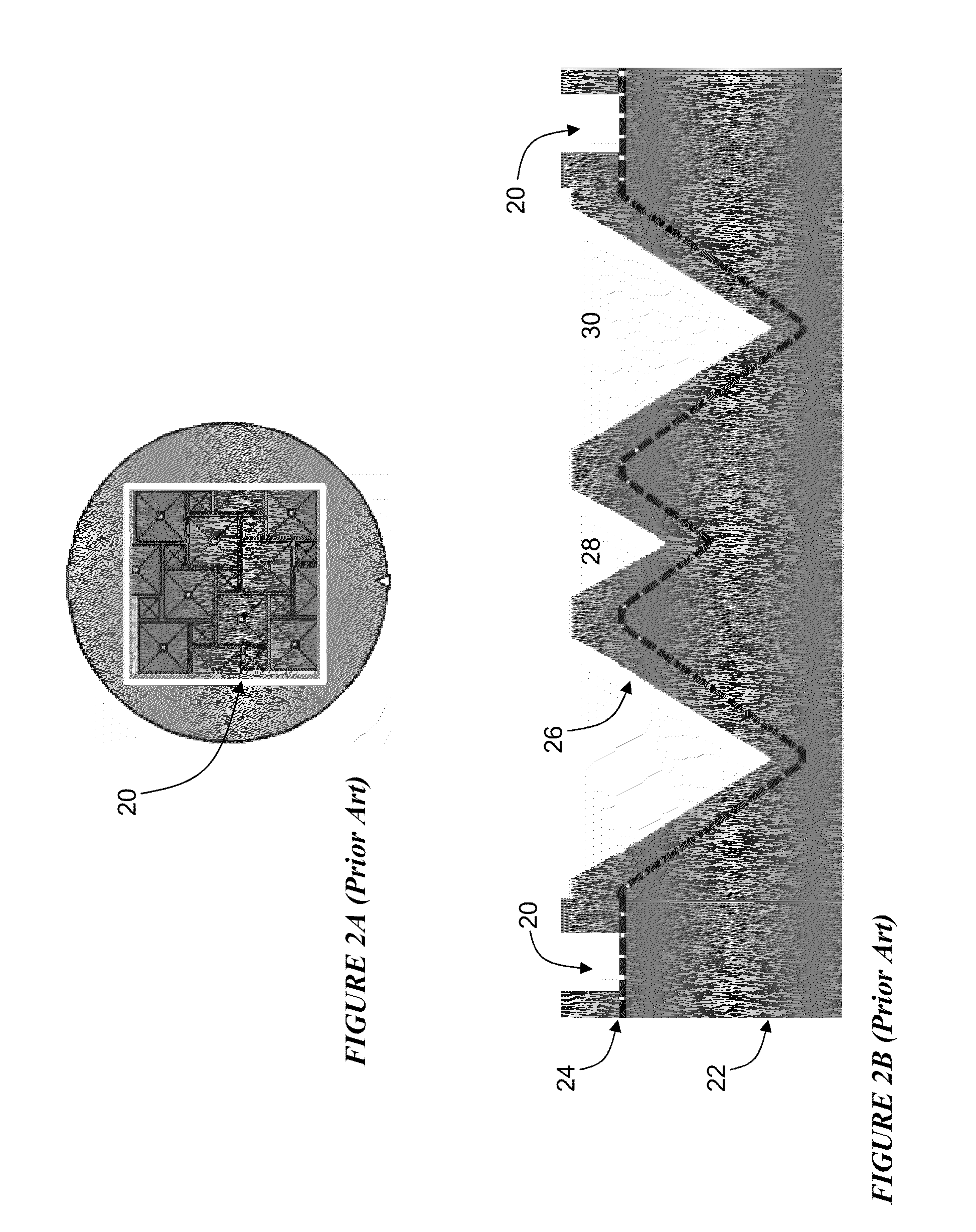Trench Formation Method For Releasing A Thin-Film Substrate From A Reusable Semiconductor Template
a technology of reusable semiconductors and trench formation methods, which is applied in the field of trench formation methods for releasing thin-film substrates from reusable semiconductor templates, and making semiconductor substrates, can solve the problems of inefficient removal, overheating variations, and no method is able to control the trench depth within the thin sacrificial layer
- Summary
- Abstract
- Description
- Claims
- Application Information
AI Technical Summary
Benefits of technology
Problems solved by technology
Method used
Image
Examples
Embodiment Construction
[0053]The following description is not to be taken in a limiting sense, but is made for the purpose of describing the general principles of the present disclosure. The scope of the present disclosure should be determined with reference to the claims. And although described with reference to the manufacture of a thin-film silicon substrate, a person skilled in the art could apply the principles discussed herein to any semiconductor material and the manufacture of a substantially planar or a 3-D thin-film semiconductor substrate. Exemplary embodiments of the present disclosure are illustrated in the drawings, like numbers being used to refer to like and corresponding parts of the various drawings.
[0054]FIGS. 1A and 1B illustrate a self-supporting three-dimensional honey-comb prism thin-film silicon substrate (3-D TFSS) according to U.S. application Ser. No. 11 / 868,489 (U.S. Patent Pub. No. 2008 / 0264477A1).
[0055]FIGS. 2A and 2B illustrate schematic drawings of an alternate 3-D TFSS des...
PUM
 Login to View More
Login to View More Abstract
Description
Claims
Application Information
 Login to View More
Login to View More - R&D
- Intellectual Property
- Life Sciences
- Materials
- Tech Scout
- Unparalleled Data Quality
- Higher Quality Content
- 60% Fewer Hallucinations
Browse by: Latest US Patents, China's latest patents, Technical Efficacy Thesaurus, Application Domain, Technology Topic, Popular Technical Reports.
© 2025 PatSnap. All rights reserved.Legal|Privacy policy|Modern Slavery Act Transparency Statement|Sitemap|About US| Contact US: help@patsnap.com



